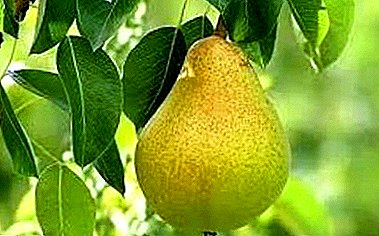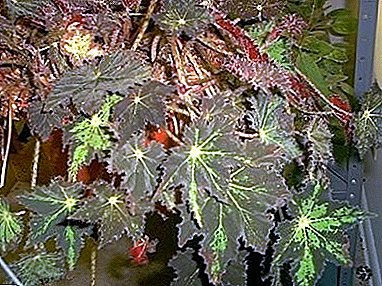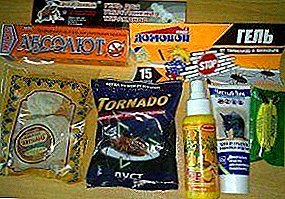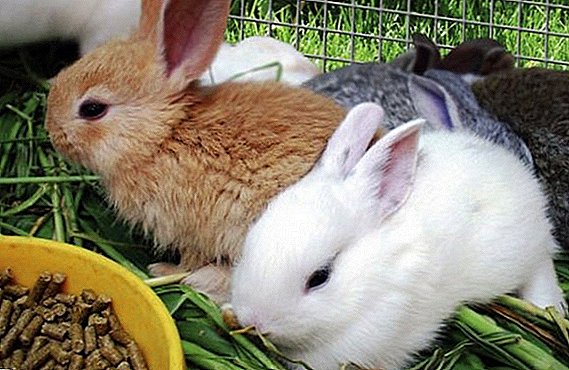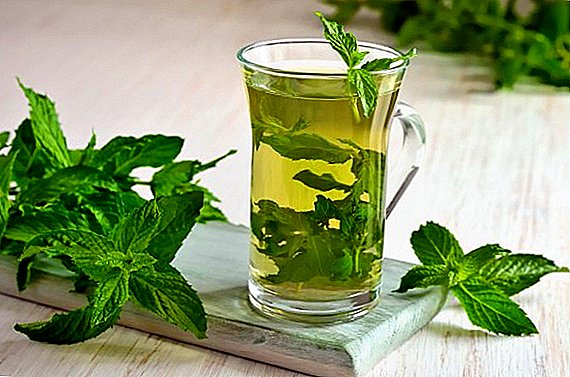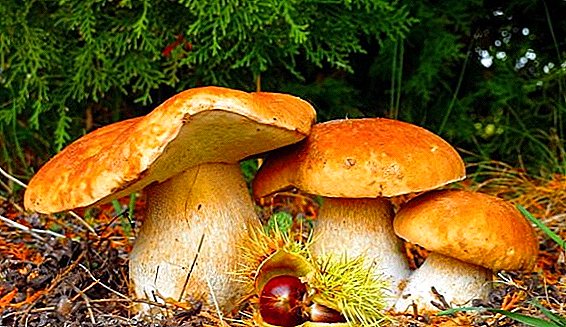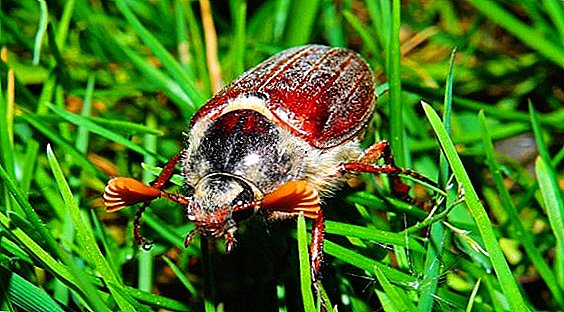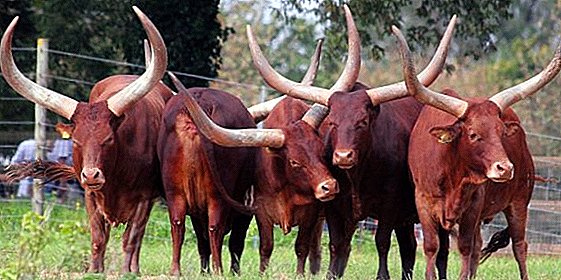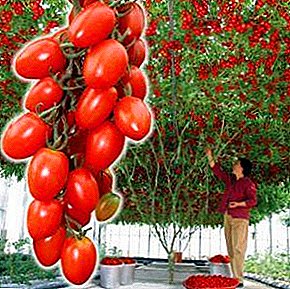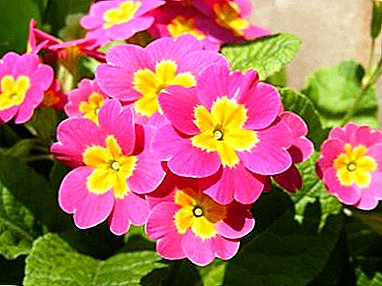
Primula or as it is called Primrose - the most popular ornamental plant. You can grow a flower at home and in the garden. Primula will please flower growers with its early flowers, which appear as late as winter or early spring.
Next, you will learn tips on growing a bright flower at home and in the open field, read about what diseases and pests can destroy the plant.
Plant description
Primula - represents a family of primroses. One of the most common plants in the world, which has about 500 species. Primrose are perennial and annual. There is a flower in the Alps, Asia, the Himalayas, in South and North America, Europe. The Latin name reveals the features of this plant. Primula - translated as "first."
It is this representative of the flora that blooms first among the rest, it happens immediately after the snow melts. Blossom quite a long time. This type affects a variety of shades: from light pink to dark purple. Flowers unite in racemes or umbrella-shaped inflorescences. Most species were cultivated due to the beauty of their bloom. Especially popular varieties primulas Danova and Obkonika.
The leaves of Primrose depart from the root and collected in the outlet. Stems are elongated and bare. At the ends of the shoots buds bloom. Not always they are collected in inflorescences, there are species in which single buds. They are the correct form, the petals grow together at the base.
Primula is a grassy flower, which means its size will be compact and small. The average size of a flower is from 25 to 30 centimeters. But while the flowers on the plant a lot. They are bright shades and cover the green volume "cap."
A photo
Then you can see the photos of such primrose varieties like Danova and Obkonika:
Primula Danova:



Primula Obkonika:


Growing as a indoor flower at home
- Temperature.
Important! For Primula, optimal temperature conditions are required.
In the spring and autumn season, it should be + 18 ... +20 degrees. In winter, from +15 to +18, and during the flowering period + 17 ... +20 degrees. At observance of these indicators, the plant will blossom longer and more plentifully. In the heating season you need to be extremely vigilant. It is not recommended to put a flower near batteries, it can negatively affect it.
- Lighting. Primula like sunlight, but it does not tolerate direct rays. From them, the plant appears red spots, and then the flower begins to dry. Flowering under the direct sun is short-lived and transient.
You can place Primula on any window sill except the south one. If the pot is far away from the windows, then additional lighting will be required. If there is no choice, and the flower has to be placed on the south side, be sure to provide shade.
- Humidity.
Since Primula grows in a wet environment in the wild, it is therefore necessary for the indoor flower to grow in soil with optimum moisture. But do not over-fill the flower with water, as an excess of moisture will lead to rotting and subsequent death of the roots.
In the summer, the plant is not necessary to spray, but in the winter it can be done with a spray gun.
Soil selection
- Priming. Flower shops sell special soil for Primrose. If possible, the soil mixture can be made by yourself. This will require peat, coarse sand, turf land and humus in equal parts. Having mixed all these components, the nutritious, friable and permeable earth will turn out.
 Fertilizers. In residential conditions Primula blooms in the middle of winter. Up to this point, the flower must be fed with complex mineral fertilizers. They should contain such components as: potassium, nitrogen, phosphorus. Potassium and phosphorus provide the formation of buds, and nitrogen will help to grow juicy leaves.
Fertilizers. In residential conditions Primula blooms in the middle of winter. Up to this point, the flower must be fed with complex mineral fertilizers. They should contain such components as: potassium, nitrogen, phosphorus. Potassium and phosphorus provide the formation of buds, and nitrogen will help to grow juicy leaves.In the second half of autumn, top dressing reduces or completely stops doing. When the buds appear, they are returned again, but nitrogen is completely excluded. After Primrose ottsvetet, give her a rest for about a month, without doing any dressings.
- Choice of dishes. The pot should not be deep, but sufficient in width. Primula has volumetric roots, so they need space.Reference. The material from which the pot is made can be any other than metal and glass. Since these materials themselves are cold and cool quickly, they will cool the root system, and this is unacceptable.
How to care in the garden?
When to cut?
Pruning is a very important component in the care of a garden Primula. It can not be neglected in any case. It takes place only in a certain period. Pruning is done during flowering, which occurs in late winter - early spring. It is necessary to cut flower stalks that have faded.This stimulates a new wave of flowering. Yellowing leaves are also removed.
How long does it take to share sockets?
Outlets are divided only in perennial varieties. Being on the same plantation a couple of years in a row, the flower grows heavily. As a result, the sockets protrude and become bare. In addition, the soil becomes less nutrients, Primula develops worse and loses its decorative effect. Regular division of sockets is a necessity. It is normal to perform such a procedure once every 2-3 years.
For proper separation and transplantation of outlets, it is necessary to water the bush properly, then dig it out, clean the roots of the soil and divide it into several parts. Each part should not be left without a root. The division is carried out in early spring.
Soil, fertilizer, watering
 The soil is needed fertile. It is necessary to make a soil mixture of leaf soil and add a small amount of manure or litter. Also experienced flower growers are advised to pour sand into the bottom as a drainage, it will not allow water to stagnate.
The soil is needed fertile. It is necessary to make a soil mixture of leaf soil and add a small amount of manure or litter. Also experienced flower growers are advised to pour sand into the bottom as a drainage, it will not allow water to stagnate.- Fertilizers. To feed Primula in the garden stands from the moment when the first leaves are formed, and to finish dressing should be at the end of flowering. Mineral fertilizers will do but need to be used in a lower concentration than what is written on the package. Bring them twice a month.
- Watering. Garden Primula needs frequent watering, but you should not flood the plant. Twice a week will be enough. During the heat, it is necessary to double the frequency of watering. To ensure suitable conditions for the flower, after watering the soil is loosened.
Seasonal features
Preparation in the fall
In the autumn, the outlets that have been separated and transplanted should be well watered. During the preparation of the primrose for wintering, watering should be every day, but do not overdo it. The socket is not trimmed for the winter, it will perform the function of protecting the rhizome from overcooling.
Recommendation. In order for the flower to feel comfortable during the cold season, the bush is sprinkled with humus on the root circle. This procedure will save the plant from frost and fertilize it.
Some species require more thoughtful preparation. Tender varieties are covered with leaves and agrofibre. A hybrid Primrose and does need to be transshipped in boxes and stored indoors in the winter.
The subtleties of primrose care in the fall are described in detail in our article.
Wintering flower
For a good wintering season, the flower needs a temperature of at least + 13 ... +14 degrees. There are species that tolerate temperatures not lower than + 16 ... +17 degrees. Does not need frequent watering. It is carried out only when the top layer of soil dries. Watering should be once a week, not more.
Seating
 Seating is done every few years, when Primrose grows, and new sockets begin to crowd each other. It is recommended to do this in the spring or in the month of August so that the plant can take root before the first frost.
Seating is done every few years, when Primrose grows, and new sockets begin to crowd each other. It is recommended to do this in the spring or in the month of August so that the plant can take root before the first frost.
A mixture of soil should be standard: sand, sod, leaf earth. If the flower grows in a pot, take care of the drainage (about 2 centimeters) in advance. Seeding is done only after the plant has finished blooming. In order not to disturb the process of growing season.
Pests and possible diseases, methods of treatment
Primula has many diseases and pests. Most often, all of their appearances are caused by the wrong content of the flower. Below we consider exactly which diseases and pests are dangerous for this plant.
Diseases:
- Jaundice.
- Mosaic cucumber.
- Spotted wilting.
- Mealy dew.
Pests:
- Aphid.
- Weevil.
- Spider mite
Aphids and mites most often appear on the plant in dry and hot weather. To overcome the parasites need to spray the appropriate insecticides.
Due to excessive watering, a disease called “gray rot” is often encountered. To fix the problem, it is worth reducing the amount of watering and spray it with a suitable fungicide.
Important! The most dangerous disease is considered fungal spotting. There will be this disease, maybe in the spring. If the leaves have bright rounded spots, then the flower is amazed.
Fungal spots can completely destroy Primula, and if the flower grows on a bed, the disease can easily spread to other flowers. To overcome the disease, the leaves are removed, and with strong lesions will have to say goodbye to Primula. After that, it is necessary to process the whole bed with a solution of topsin or a foundation.
Conclusion
Primula - a beautiful plant that fascinates with its diversity. This indoor flower can be grown at home and in the open field. Caring for him is not difficult, but failure to follow the rules can even lead to the death of the plant. It is necessary to adhere to the recommendations for the care and then the flower will delight with its magnificent buds.


 Fertilizers. In residential conditions Primula blooms in the middle of winter. Up to this point, the flower must be fed with complex mineral fertilizers. They should contain such components as: potassium, nitrogen, phosphorus. Potassium and phosphorus provide the formation of buds, and nitrogen will help to grow juicy leaves.
Fertilizers. In residential conditions Primula blooms in the middle of winter. Up to this point, the flower must be fed with complex mineral fertilizers. They should contain such components as: potassium, nitrogen, phosphorus. Potassium and phosphorus provide the formation of buds, and nitrogen will help to grow juicy leaves. The soil is needed fertile. It is necessary to make a soil mixture of leaf soil and add a small amount of manure or litter. Also experienced flower growers are advised to pour sand into the bottom as a drainage, it will not allow water to stagnate.
The soil is needed fertile. It is necessary to make a soil mixture of leaf soil and add a small amount of manure or litter. Also experienced flower growers are advised to pour sand into the bottom as a drainage, it will not allow water to stagnate.